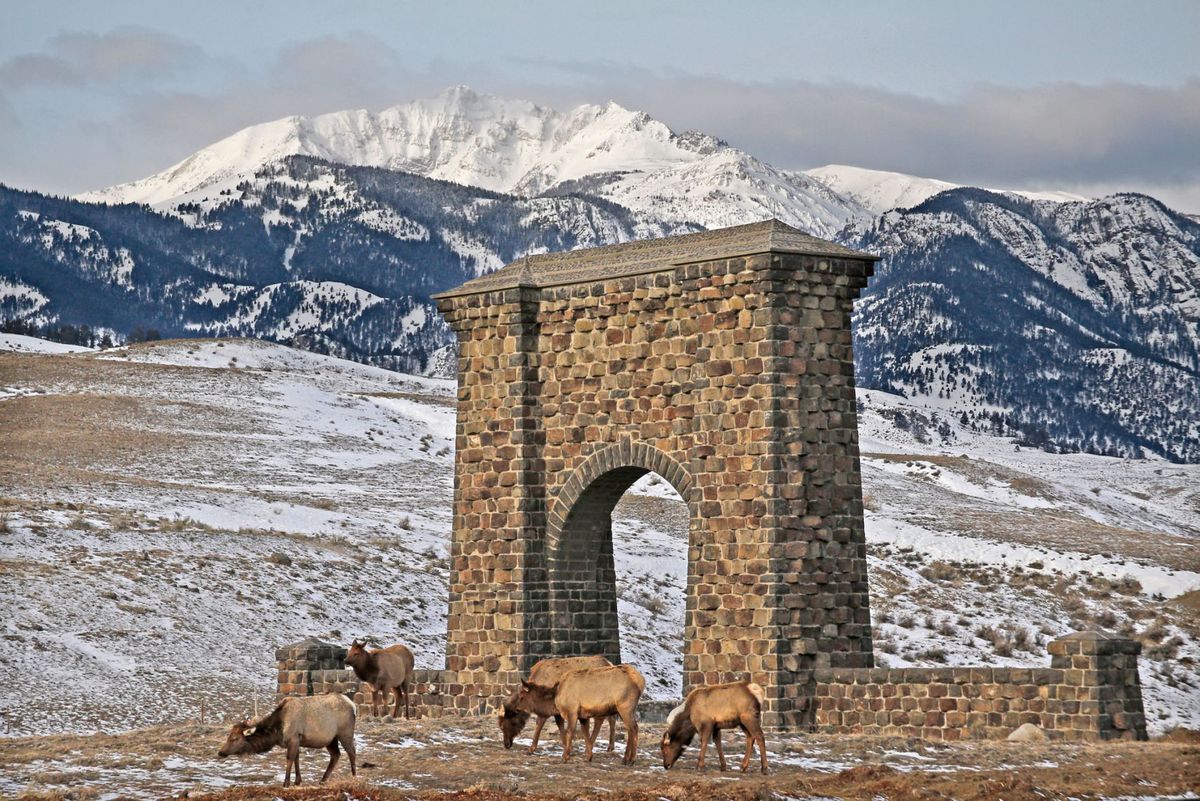Winter is Wild in Yellowstone
 One-ton bison bulls stand belly-deep in snow, swinging their massive heads to dig down to buried grass. The Lamar River disappears under a white winter blanket crisscrossed with four-footed tracks. Steam clouds from the Mammoth Terraces tower against a cold blue sky.
One-ton bison bulls stand belly-deep in snow, swinging their massive heads to dig down to buried grass. The Lamar River disappears under a white winter blanket crisscrossed with four-footed tracks. Steam clouds from the Mammoth Terraces tower against a cold blue sky.
This is winter in Yellowstone, and you can see it from the comfort of your own car. The park’s north entrance at Gardiner is open year-round. The road across the northern tier is plowed all the way to Cooke City; snow tires are required. Critters outnumber people in February, March and early April when all other park roads are closed to regular traffic.
The wildlife watching starts outside the park’s Gardiner entrance. Bald eagles often perch on the highest trees along the Yellowstone River around Corwin Springs. Bands of bighorn sheep also frequent that area, along with antelope, mule deer and elk. Just inside the Gardiner park entrance, look up for bighorns that often graze the bench on the east side of the road or cling to the steep slopes above the Boiling River.
At times, the snow-covered hills between Gardiner and Mammoth are dotted with elk and bison. In Mammoth, take a walk around the thermal terraces or stroll between the historical markers at Fort Yellowstone. Stop in the Albright Visitor Center (renovated last year and now open 9 a.m. to 5 p.m. daily) to warm up and learn about Yellowstone in museum exhibits and video.
Heading east, visitors can see the icy spires of Undine Falls. The falls overlook is just a few yards from the road, but watch your step on the snowpacked path.
MORE>>>Billings Gazette
Leave a Comment Here